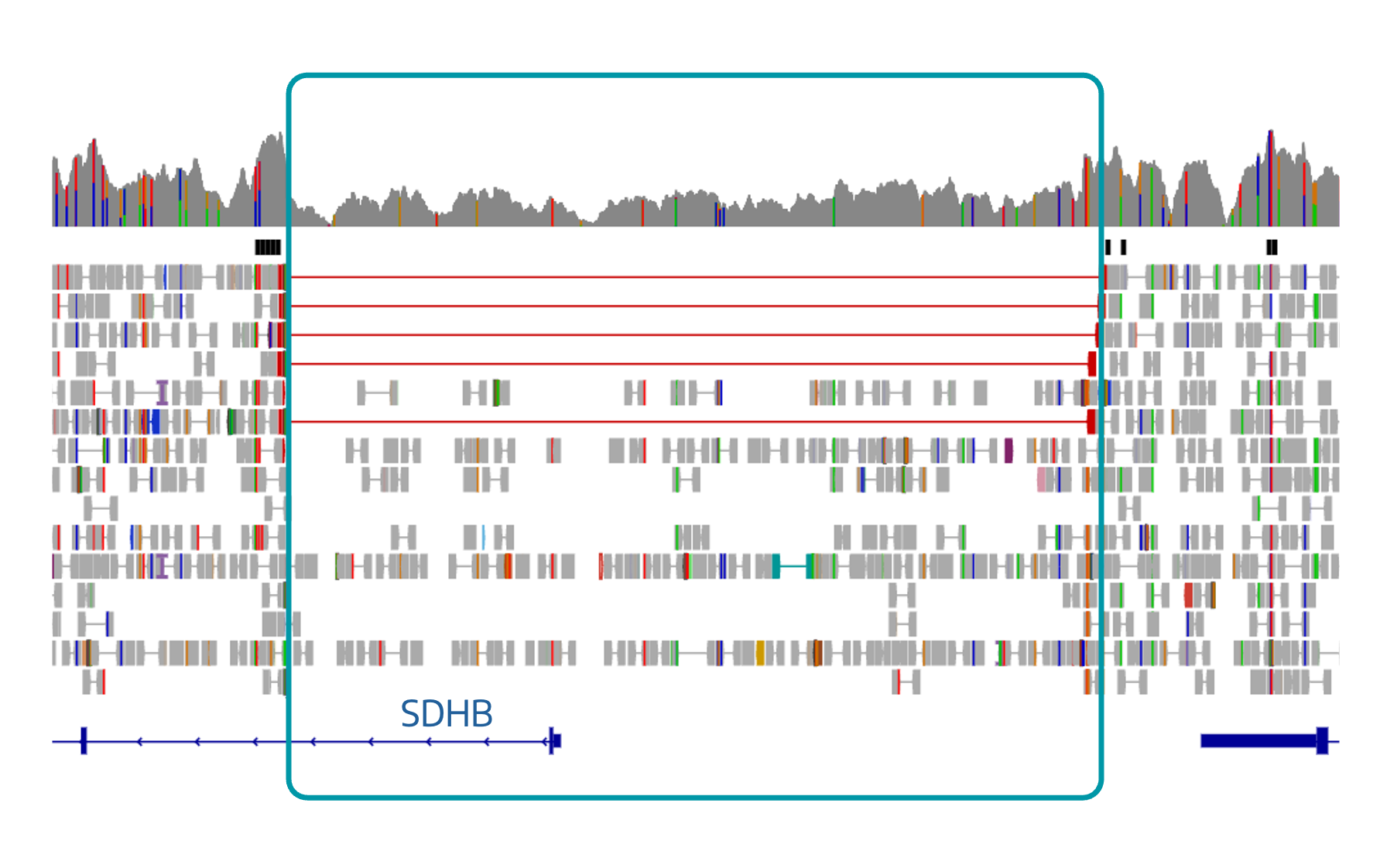MISSED BY OTHERS, DETECTED BY US
OncoAlly® Hereditary Cancer Case Study
Clinical presentation
A 44-year-old male presented with a concern for hereditary cancer susceptibility based on:
- History of bilateral carotid paragangliomas
Previous genetic testing
Testing was performed with non-diagnostic results:
- Multi-cancer panel + RNA analysis
OncoAlly® Hereditary Cancer Testing
was ordered because of its ability to identify all major variant types in a single test.
Results and interpretation
Variantyx OncoAlly® hereditary cancer testing identified a heterozygous, pathogenic 15.68 kb deletion that removes exon 1 of the SDHB gene.
Surgery is likely to be recommended over observation as paragangliomas associated with germline SDHB variants are aggressive and more prone to metastasis.
Diagnosis: Hereditary pheochromocytoma/paraganglioma syndrome 4

Uniform data from WGS clearly shows the 15.68 kb single exon deletion.
The Variantyx Difference
Why was OncoAlly® hereditary cancer testing able to detect the single exon deletion missed by previous targeted panel testing?
-
Targeted tests like the multi-cancer panel ordered are typically unable to detect deletions smaller than 500 bp. While the full size of the deletion is 15.68 kb, the exonic portion is only <250 bp.
Variantyx genome analysis has a detection range from 1 bp to whole chromosomal events, easily detecting this single exon deletion. -
One deletion breakpoint is intronic while the other falls in the intergenic region upstream of the SDHB gene, adding to the complexity of detection.
Variantyx genome analysis includes intronic and intergenic regions, enabling breakpoint detection regardless of location.
Variantyx tests that would have identified this variant
Want similar results for your patients?
Connect with a Clinical Specialist to find out how easy it is to bring the power of whole genome sequencing into your practice.
